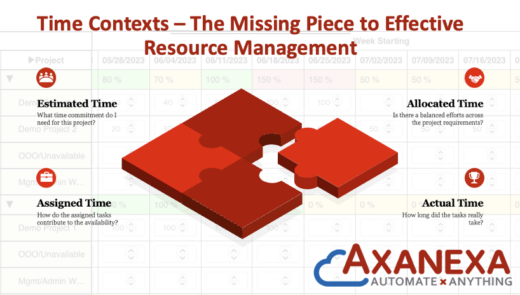
Time & Resource management is a critical aspect of successful project and portfolio management. Within this realm, understanding and effectively utilizing different time contexts can significantly impact project efficiency. In this blog, we delve into the dynamic time contexts of estimated time, assigned time, allocated time, and actual time. By harnessing these contexts and adopting a supply and demand approach, project managers can optimize resource allocation and unlock the full potential of their team.
Estimated Time: The Foundation of Project Planning – At the core of project management lies estimated time, which involves estimating the effort required to complete a task. This context provides project managers with a foundation for planning and resource allocation. By accurately estimating the time needed for each task, managers can create realistic project schedules, set achievable goals, and allocate resources effectively.
Assigned Time: Bridging Task Assignments and Demand – Assigned time represents the task and time assignment to resources, providing an indication of the required task completion timeframe. Although it does not consider resource availability or allocations, it serves as a demand indicator. By assigning tasks based on project requirements and priorities, project managers gain insights into resource needs and workload distribution, setting the stage for further optimization.
Allocated Time: Optimizing Resource Utilization – Allocated time plays a crucial role in optimizing resource utilization. It refers to the specific timing given to a resource to perform a task, taking into account both time constraints and resource availability. By allocating time effectively, project managers ensure that resources have dedicated slots to focus on their assigned tasks, minimizing conflicts and enhancing overall project efficiency.
Actual Time: Tracking Progress and Utilization – Actual time reflects the time when a task is performed and recorded. It serves as a valuable metric for tracking progress, evaluating task execution efficiency, and making data-driven decisions. By comparing actual time to estimated and allocated time, project managers can identify deviations, bottlenecks, or delays, enabling them to adapt and adjust resource allocation or project timelines as necessary.
The Problem: All too often we see Allocated time be confused with Assigned Time or only partially addressed in a tool. A true Project / Portfolio management solution needs to account the 4 types of time.
In an upcoming series, AXANEXA will show case how monday.com can help you master the 4 types of time context and why monday.com should be your tool of choice for Project & Portfolio Management
Partners:





